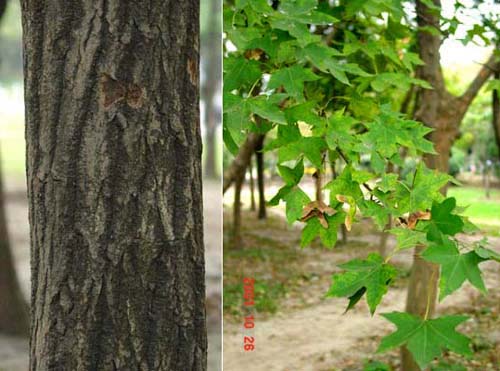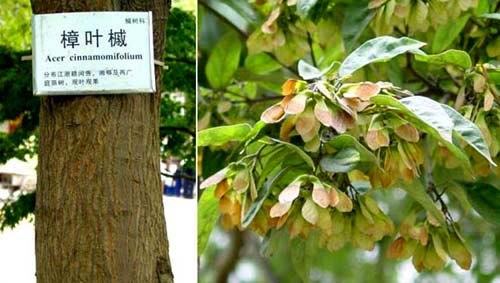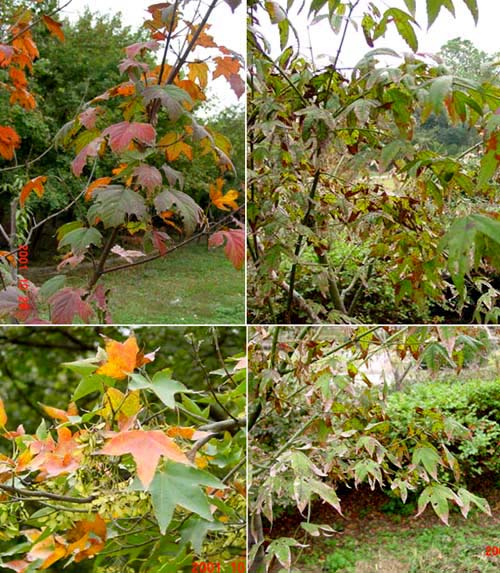
Shanghai botanic garden is founded at a site for tree cultivation in1974,
and now serves as one of the most tree planted areas in Shanghai.
At this
area of 81 ha there are more than 3000 species of plants peculiar to this
region,
including 108 sorts of rare plants or plants on the verge of extinction.
In the botanical garden, many specialists and engineers are engaged in
scientific research business, education, gardening, scene instruction,
the interior design business treating plants, etc.
An annual visitors count
700,000 or more people.
As sub gardens, there are divisions for ferns, needle-leaf trees, Magnolia,
Paeonia, Rhododendron, roses, maples, Osmanthus, and
bamboo.
Besides, there are bonsai garden, medicinal herb garden,
Chinese
cymbidium collection and comprehensive exhibition hall.
On October 26, 2001, I was able to visit Shanghai botanic garden only
for 1 hour.
I heard it takes more than 30 minutes from the main gate to
the maple garden on foot,
so I used career car of the garden. I could see
only the maple garden.


First, let me show one of the group of Itayakaede (Acer pictum)
from Japan.
There are deep fissures at barks and the length of the seed
itself is from 1 to 1.5 cm
and seed with wing is 3 to 3.5 cm. It seemed
to me Acer truncatum Bunge or something.

Next, I will show you Acer cinnamomifolium Hayata,
and it would
be valid since the name plate was attached.
This species is one of the
group of Tohkaede (A. buergerianum)
or Kusunohakaede (A. oblongum).
It has single leaves mostly with no lobes, and it is evergreen.
As shown
in the following photos it has plenty of seeds
but most of them proved
to be empty after coming back to Japan.


As for the upper left of four photographs,
its seed was covered with
hair and the length with wing was at least 3.5cm - 4.0 cm.
It resembled
Kajikaede (A. diabolicum) from Japan,
and I would guess it would
be A. sinopurpurascens Cheng or A.franchetii Pax.
Lower left
would be considered to be A.oliverianum Pax.
I cannot specify about the right side 2 species. Both of their leaves have three lobes.
Otherwise, I saw Tohkaede and something of Series Palmata or
Series Sinensia.
It was a fascinating botanical garden where I would
like to visit again
to observe one by one at my leisure.